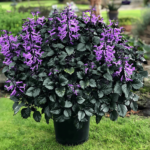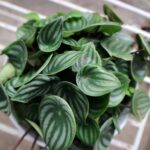Ceratophyllum demersum is a widely used plant in aquariums.
Popularly known as Hornwort, it has rapid growth and is easy to cultivate, serving as a refuge and food for the animals in your aquarium, in addition to combating algae.
Keep reading this text to learn more about the characteristics and cultivation of this plant that can be found in various countries around the world.
Characteristics
The Hornwort is an aquatic species considered cosmopolitan, meaning it can be found in almost every part of the world, in various locations such as lakes, rivers, reservoirs, and aquariums.
One of its most striking characteristics is the fact that it does not have roots. Its long, filamentous stems are free in the water, able to float or become entangled in branches and other plants.
Its leaves are thin and delicate, with a feather-like shape and a bright green color. They are dichotomously divided, meaning they branch into two equal parts. Marginal spines are rare, but basal spines can be found in various sizes.
Its flowers are small and inconspicuous, arranged in spikes. The flowers are hermaphroditic, meaning they have both male and female organs.
Below are some of the advantages of cultivating this plant in your aquarium.
Advantages of Cultivating It
Ceratophyllum demersum will help your aquarium in various ways, for example:
- Helps stabilize the substrate
- Removes dissolved nutrients from the water
- Absorbs heavy metals and chemicals from the water
- Produces oxygen through photosynthesis
- Serves as food for fish (also consumed by turtles and birds such as ducks or swans)
Liked the advantages? Then see below how to take care of your hornwort .
How to Care for Hornwort
The hornwort is easy to cultivate and ideal for beginners.
It adapts well when placed in aquariums or ponds, with rapid growth, reaching up to 80cm (31,5 inches), and no roots.
Below are tips for properly caring for this plant:
- Where to Plant: can be planted in substrates.
- Temperature: it is resistant to various temperature ranges, with the ideal being between 15°C to 24°C (50°F to 75°F).
- CO₂: not necessary for its development, but it helps in the plant’s growth.
- Light: prefers to receive plenty of illumination.
- pH: the ideal range is between 5 to 7
- Multiplication: you can multiply this plant by cutting its stem
Conclusion
The hornwort is a very resilient species that can withstand various cultivation conditions.
I hope that with this article, you have learned a bit more about its characteristics and cultivation.
And, if you want to learn more about other plants, I recommend reading the texts below:
- Stricta Air Plant (Tillandsia stricta) – How to Care Easily
- Lipstick Plant – How to Care, Prune and Fertilize
- Leatherleaf fern – Care, Characteristics and Curiosities
- Ludisia the Jewel Orchid – How to Care in 7 Simple Steps
Until next time :D!















